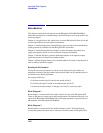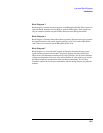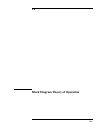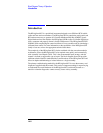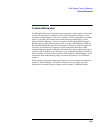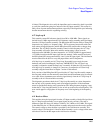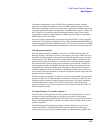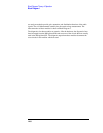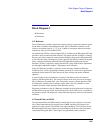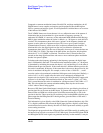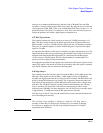
14-5
Block Diagram Theory of Operation
Block Diagram 1
is limited. The diagnostics also verify the input filters and a connectivity check is provided
to verify the connections going into and out of the A23 Input assembly. This section is a
likely cause of power measurement problems, especially if the diagnostics pass indicating
that the measurement board is responding correctly.
A17 StepLoop B
This assembly creates RF reference signals from 500 to 1000 MHz. These signals are
derived from a 1 MHz output from the A15 Reference section assembly and digital inputs
from the A33 Hop Controller assembly. The HP/Agilent 8922 has the ability to change RF
frequencies very quickly; to “frequency Hop”. This is necessary because the radios and
base stations change frequencies and the HP/Agilent 8922 must be able to change along
with them. The A33 Hop Controller assembly controls which frequency the A17 Step
Loop assembly will create. Most radio and base station testing is done at carrier
frequencies near 900 MHz. For these frequencies, A17 STEP LOOP B is approximately
114.3 MHz lower than the RF input signal that was entered. Unlike some RF analyzers,
the HP/Agilent 8922 cannot automatically “tune” to the RF input signal. This information
must be entered for the 8922 to set up the proper filters and LO frequencies.
A26 Step Loop A assembly and A17 Step Loop B assembly have exactly the same
hardware and can be interchanged if necessary. IMPORTANT: The A25 Sum Loop
assembly is adjusted to match the Step Loop A assembly. If either the A25 Sum Loop or
A26 Step Loop A assembly is changed, it is necessary to readjust the A25 Sum Loop
assembly using the instructions in chapter 7 section of this manual.
Early versions of the HP/Agilent 8922 provided the A17 Step Loop B assembly output to
the rear panel, which was then normally routed back into the instrument using an external
coax cable. Newer instruments now route the signal directly from the A17 Step Loop B
assembly to the A11 Receiver Mixer assembly.
The diagnostic procedures check the A17 Step Loop B assembly at various frequencies
but can only verify operation during static (non-hopped) operations. If the instrument
meets its specifications during static operation but fails during frequency hopping, it may
be that the A17 Step Loop B assembly is slow to lock-up to the correct new frequency. The
error would appear as a high phase or frequency error at the beginning of the frequency
hop.
A11 Receiver Mixer
This modules mixes the input signal from the A23 Input assembly with the LO signal from
the A17 Step Loop B assembly (or rear panel signal on early versions). The sum or
difference signal will always be within ± 50 kHz of 114.3 MHz or 614.3 MHz. This signal
is then filtered by the A11 Receiver Mixer assembly and passed onto the receiver section.
The control voltage to select the filter is provided by the A16 Receiver assembly. This
control voltage is fed into the A11 Receiver Mixer assembly (as a dc voltage) on the same
cable that is used for the RF output to the A16 Receiver assembly.




